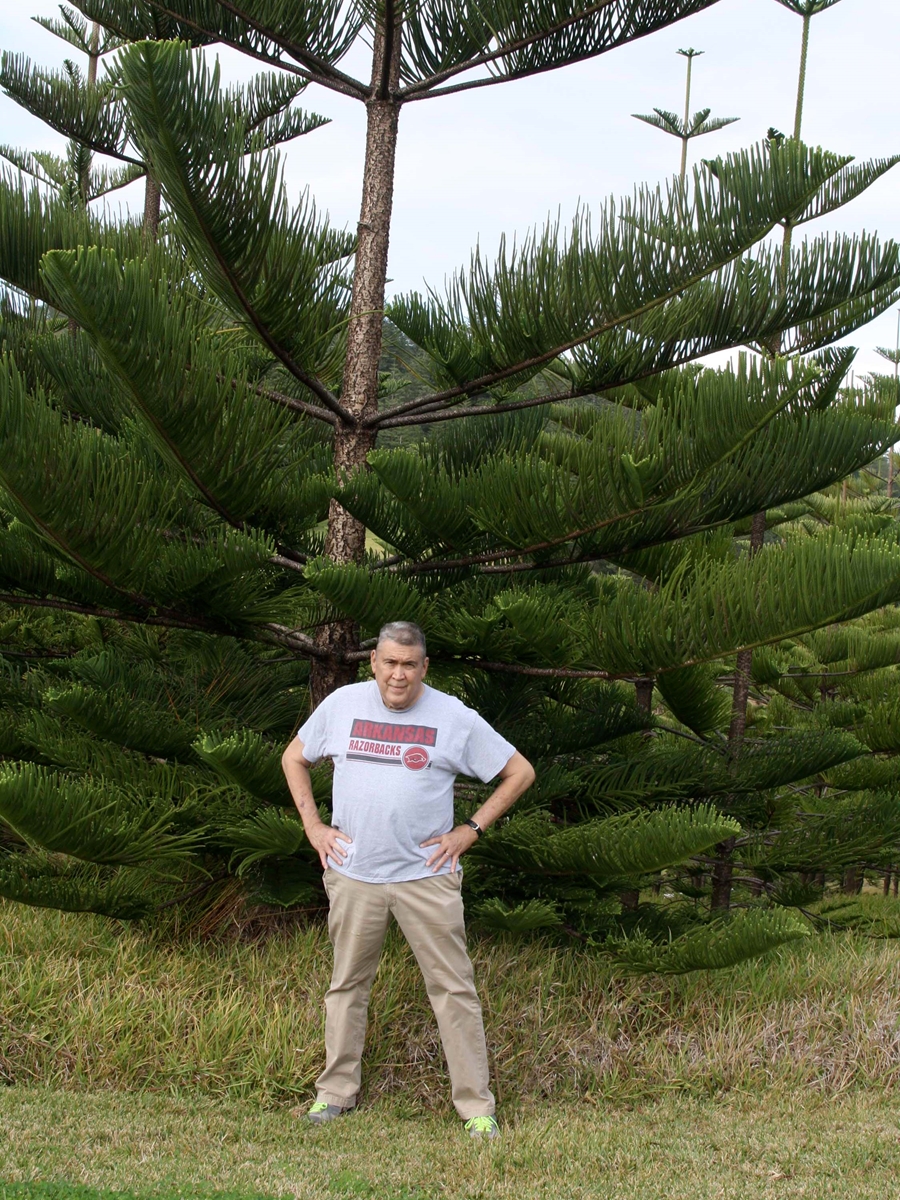Biologist Searches Remote South Pacific Island for Slime Molds
Norfolk Island is an isolated island in the South Pacific located between New Zealand and Australia. The island is quite small, with a total area of only about 14 square miles. Norfolk Island is known for two things. First, it is the native habitat for a tree known as the Norfolk Island pine, which is widely planted throughout subtropical and tropical areas of the world. Second, the descendants of the Tahitians and the mutineers from the HMS Bounty (from the famous incident referred to as "mutiny on the Bounty") were resettled on Norfolk Island from Pitcairn Island in 1856.
The first known inhabitants of Norfolk Island were Polynesians, but they were not present when Captain James Cook "discovered" the island in 1774. Great Britain first settled Norfolk Island a few years later in 1788. The island served as a convict penal settlement during much of the period between 1788 and the middle of the 19th century. At the present time, the population of the island is approximately 1,700, and the largest town is named Burnt Pine.
Steve Stephenson, a research professor in the Department of Biological Sciences, and his wife Barbara, an instructor in the Department of Mathematical Sciences, spent two weeks on Norfolk Island in June. The purpose of their visit was to survey for myxomycetes (commonly referred to as slime molds). No previous survey for this group of fungus-like organisms had been carried out on the island.
Stephenson has been interested in long-distance dispersal and the biogeography of myxomycetes on isolated islands, and previous expeditions have taken him to Macquarie Island in the Southern Ocean, Ascension Island in the Atlantic Ocean, and Christmas Island in the Indian Ocean.
Stephenson's studies of myxomycetes over the past 40 years have taken him to all seven continents, and he has collected these organisms in every major type of terrestrial ecosystem. He is the author or coauthor of thirteen books and more than 400 book chapters and papers published in scientific journals. Many of these deal with the distribution, ecology and biology of myxomycetes.
Topics
Contacts
Steven Lee Stephenson, visiting professor
Department of Biological Sciences
479-575-2869,
slsteph@uark.edu
Bob Whitby, feature writer
University Relations
479-575-4737,
whitby@uark.edu
Headlines
Four Students Named Goldwater Scholars; Two Earn Udall Honorable Mentions
Four U of A students have received the prestigious Goldwater Scholarship, an award for top students in mathematics, science, and engineering.
Cross-Campus Collaboration Culminates in New Outdoor Geological Installation
Grand opening event to celebrate the new GeoLab installation at the U of A’s Gearhart Hall courtyard is set for May 3. The installation will be open to the public year-round.
First Students to Use Online Degree to Hone Nursing Leadership, Elevate Patient Care
Hanna Baxendale and Wendi Kimbrell will begin coursework in the Doctor of Nursing Practice-Executive Master of Business Administration program offered by the Eleanor Mann School of Nursing and Walton College.
Join the Office for Sustainability on a Final Cruise to Campus
Cruise to Campus Wednesdays have fostered a gathering space for individuals interested in biking to campus. Drop by the Old Main Lawn from 7:30-10 a.m. Wednesday for coffee, something to eat and conversation.
Fay Jones School Student Ambassador Program Gives Voice to Design Students
The student ambassador program at the Fay Jones School of Architecture and Design is built to connect top design students with their school, its alumni, its future students and others inside and outside the school.





